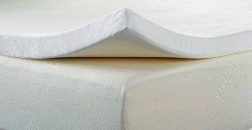How to KT Tape Knee for Torn Meniscus

A meniscus tear can be quite painful and limiting the type of activities you can engage in. KT taping the knee helps in reducing pressure to the tissue, which reduces discomfort or pain that may otherwise slow you down. In addition, correct taping can help provide support to muscles by helping the muscle to not over-extend or over-contract.
How Do You Put KT Tape on Your Knee?
Knee taping is usually done to improve knee stability. It can help reduce pain and excessive range of motion during physical activity. Knee taping for stability should be tight enough to support the knee, but not so tight to cut off circulation.
You will need:
- Kinesiology tape (KT tape)
- Scissors
You should apply kinesiology tape one hour before beginning the activity. Also, make sure you clean dirt, oils, and lotions from the area before you start.
To tape your knee for stability:
- Measure from the bump under your kneecap (tibial tubercle) to your quadriceps tendon. Cut two tape strips of equal length. Round the ends to minimize peeling.
- Sit on a chair or bench and bend your knee. Peel the first inch of one strip. Secure outside the tibial tubercle without stretch.
- Stretch the tape to 40 percent and wrap it around the inner knee, following its natural curve. Secure the end without stretch and then rub the tape to activate the adhesive.
- Repeat the process with the second strip to KT tape outer knee, crossing the ends to form an X.
- Cut a strip of tape long enough to wrap under the kneecap. Straighten your knee slightly.
- Peel the tape from the middle. Stretch to 80 percent and apply under your kneecap. Wrap the tap along with your hamstrings and secure the ends.
To apply KT tape for knee pain:
- Cut one 10-inch strip of tape and round off the ends to minimize peeling.
- Sit on a bench and bend the knee at a 90-degree angle.
- Peel the first inch of tape. Secure below your inner knee, on the upper part of your calf muscle.
- Stretch the tape to 10 percent and wrap along with the inner knee. Then rub the tape to activate the adhesive.
- Then cut two strips of tape, 5 inches each. Round off the ends. Peel one strip from the center, and apply diagonally on the area of pain with 80 percent stretch. Secure the end.
- Repeat with the second strip to make an “x”.
You can also KT tape knee ACL sprain to support the knee and be more confident to move around. Taping is important if your knee is unstable as it helps protect other structures like ligaments and cartilage.
Check this too: Best knee brace for osteoarthritis
Does KT Tape Help a Meniscus Tear?
KT tape helps prevent injury by decreasing the stress on the tendons around your knee. If you are looking to stay active after your meniscus tear, or need extra support while you are in physical therapy, KT taping can help provide stability and pain relief.

![Good Posture When You Draw [How to Get the Best Position]](https://www.goodposturehq.com/wp-content/uploads/thumbs_dir/Good-Posture-When-You-Draw-prlnpziekmihpj280qk0337a867a3d3oaq0qc83nbo.jpeg)
![SUV vs Sedan Good Driving Posture [Best Sitting Position]](https://www.goodposturehq.com/wp-content/uploads/thumbs_dir/Sedan-Good-Driving-Posture-prgr0xfu7wpe98up4mvnrs2g311miv57eesvnlpdck.jpeg)


